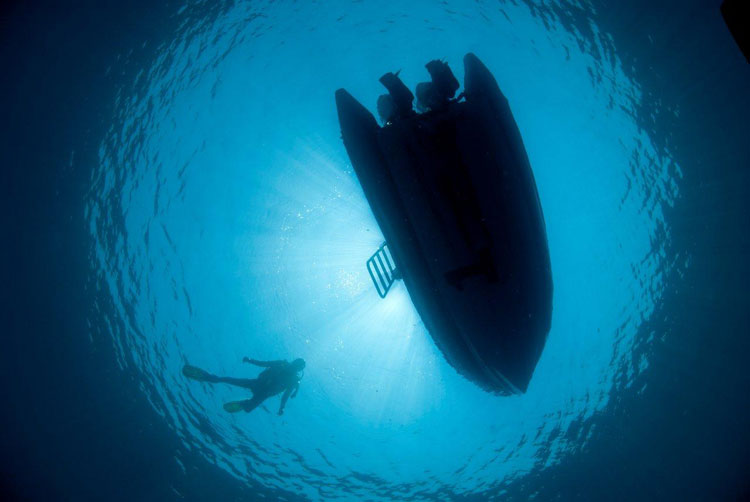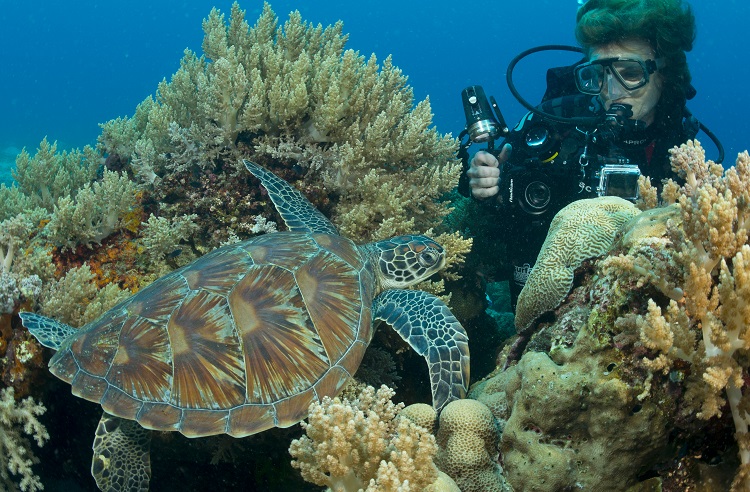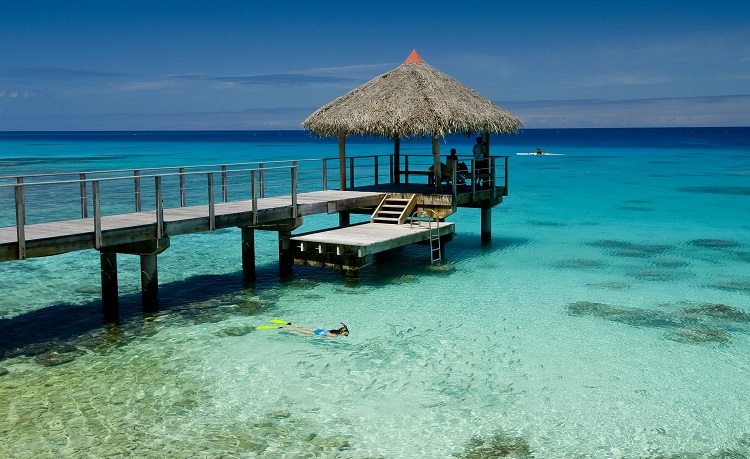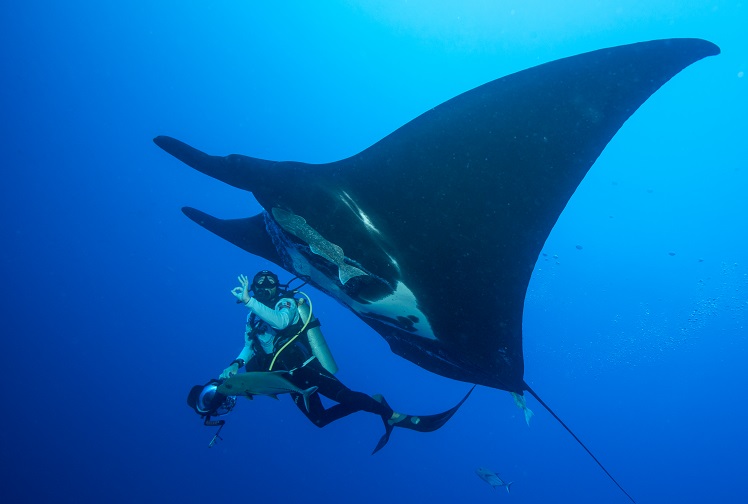Diveboat suspended in Sunbeams
05-May-2013 Back to Image Gallery
As I returned to our dive boat I noticed the strong shafts of light created as the vessel drifted under the direct path of the sun. Our dive guide floated near the boat observing my ascent and the combination of recognisable forms silhouetted in light and shadow just begged for attention. Arresting my ascent I manoeuvred around beneath the boat shooting a combination of horizontal and vertical images knowing I could decide later which format I liked best. The flat calm blue sea, cloudless sky and strong sunlight combined to produce a classic image often seen but often overlooked by photographers retuning from liquid inspirations to terrestrial realities!
Photo Data: Location: Dive site, Blade, Wakatobi, South Sulawesi. Genre: Wide Angle Sunlight Silhouette. Photo Data: Nikon D200 with Nikkor 10.5 lens + 1.4 Teleconvertor, Seacam Silver Housing & Dome Port. Manual Exposure Mode. Strobes turned off. Image by Kevin Deacon.
Photo Hints: The key to success in this shooting situation is manual exposure. In other words, you take total control of the cameras shutter speed and aperture setting while disregarding the cameras light meter. This is not possible on many compact cameras that only provide auto exposure. The problem with auto exposure is the cameras light meter will go crazy trying to deal with the bright shafts of light from the sun. Once you have control of your manual exposure mode in your camera you should choose a shutter speed of 1/250 second or more to ensure you freeze the light beams. For silhouettes to work well each subject in frame must not blend (morph) into the other subjects, otherwise the silhouetted shapes will not be recognisable. When shooting directly upward breathing is a luxury you will have to do without if you wish to avoid annoying bubbles in your frame. Unless you are using a rebreather of course. Not having a rebreather I just chose not to breathe!
Interesting Facts: Images shot with the vertical format will provide a sense of depth and make better use of the shape of some subjects with a vertical orientation. On the other hand, if your subject has a horizontal orientation, use the horizontal format for your composition. Many underwater photographers have a `deeper is better’ mindset and often overlook the water shallows as a productive subject area!



